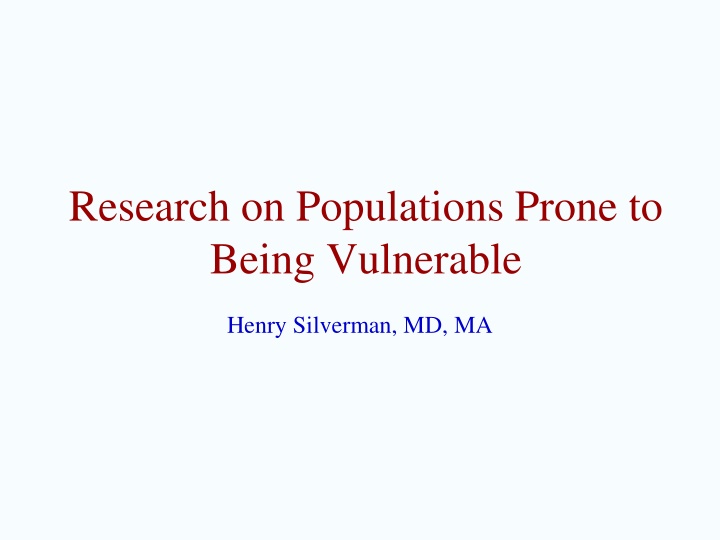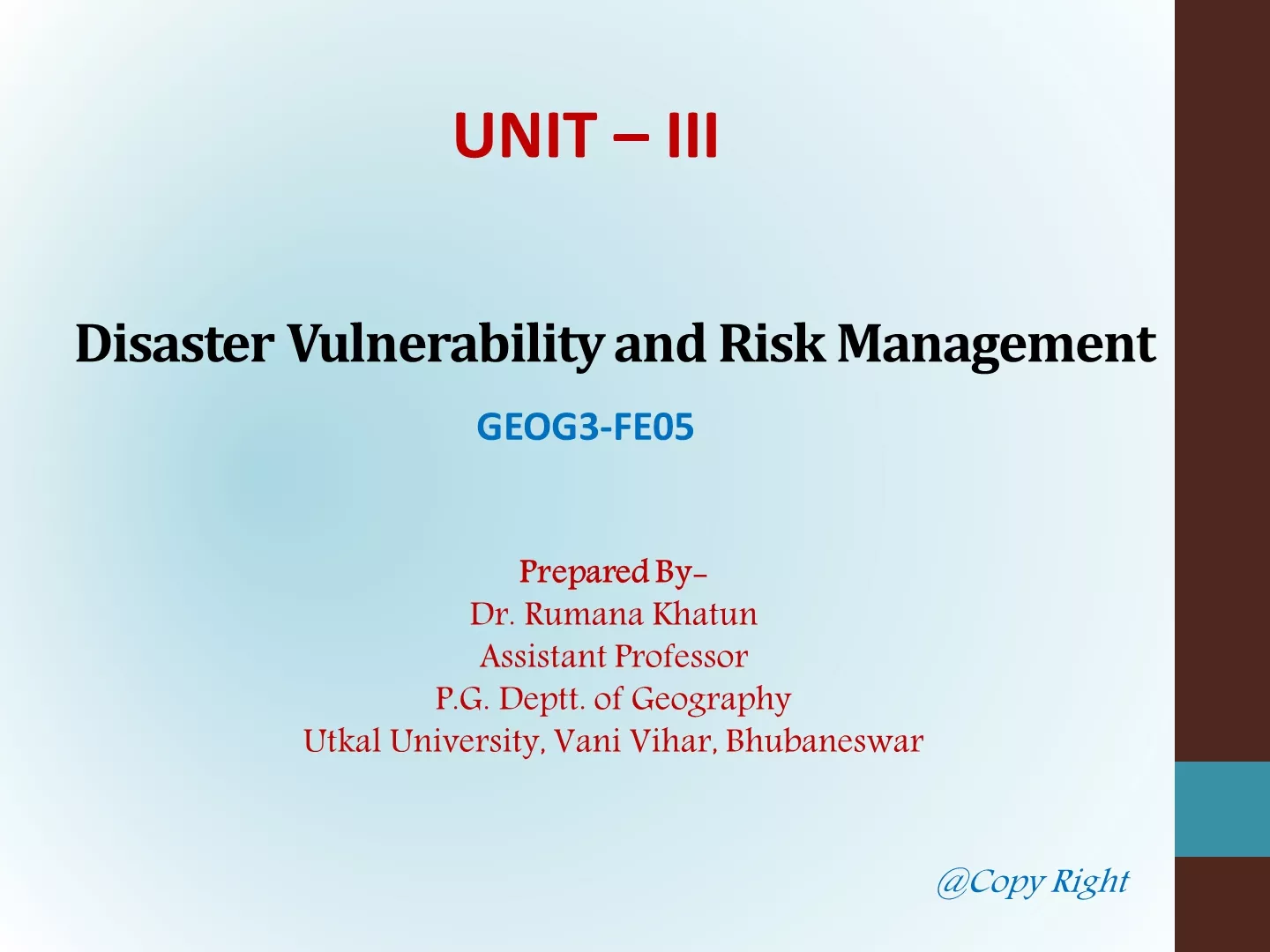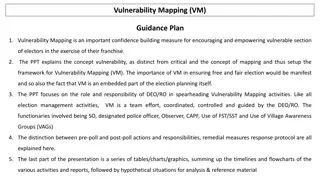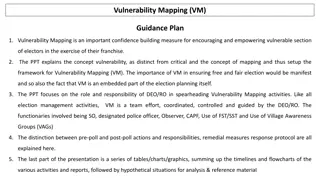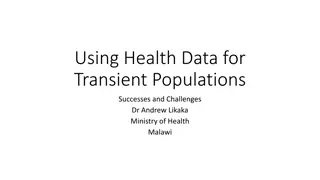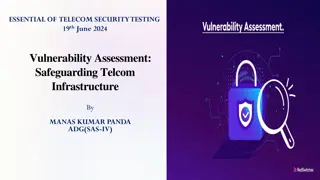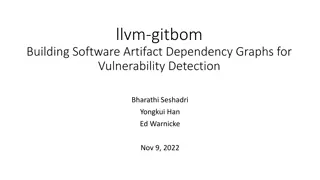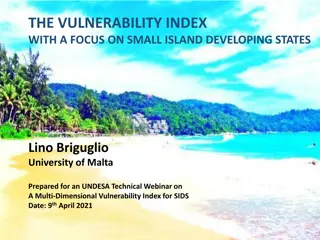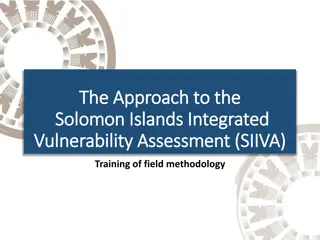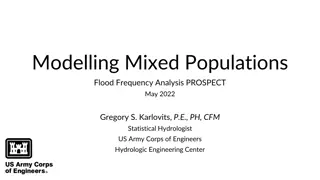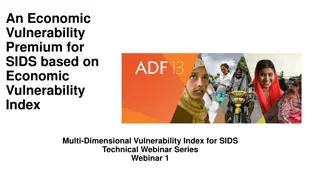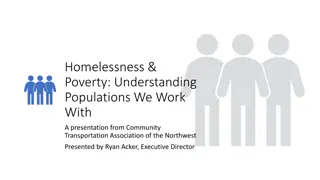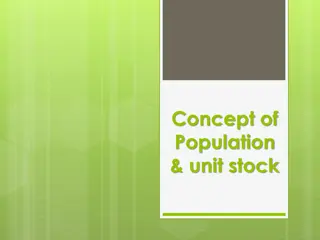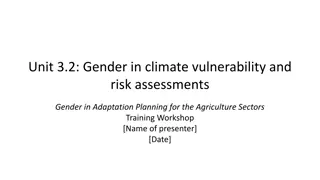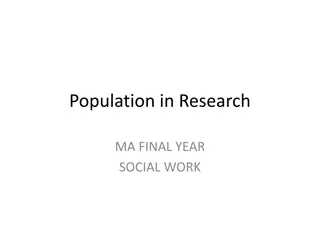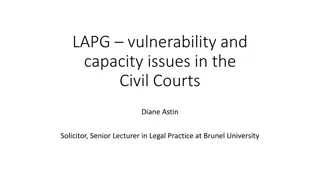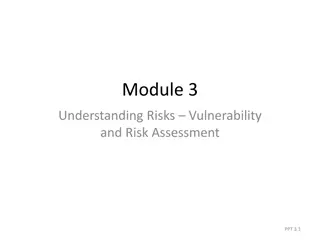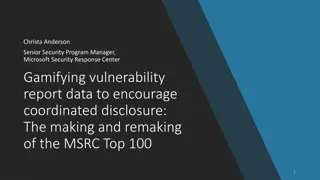Vulnerability in Research Populations
Vulnerability in research populations refers to being exposed to harm without the ability to protect oneself adequately. Factors contributing to vulnerability include intrinsic limitations like decision-making capacity and situational influences such as political or economic circumstances. Different types of vulnerability include cognitive, communicative, economic (poverty), and dependent relationships. International guidelines emphasize the protection of vulnerable individuals in research settings to prevent exploitation and undue influence.
Download Presentation

Please find below an Image/Link to download the presentation.
The content on the website is provided AS IS for your information and personal use only. It may not be sold, licensed, or shared on other websites without obtaining consent from the author.If you encounter any issues during the download, it is possible that the publisher has removed the file from their server.
You are allowed to download the files provided on this website for personal or commercial use, subject to the condition that they are used lawfully. All files are the property of their respective owners.
The content on the website is provided AS IS for your information and personal use only. It may not be sold, licensed, or shared on other websites without obtaining consent from the author.
E N D
Presentation Transcript
Research on Populations Prone to Being Vulnerable Henry Silverman, MD, MA
How to Define Vulnerability? Two senses of vulnerability vul ner a ble to be exposed to the possibility of being attacked or harmed, either physically or emotionally. Synonyms: defenseless, unprepared, frail, weak, helpless, in danger, at risk. liable to succumb to temptation or manipulation . Undue inducement, coercion, exploitation
International Guidelines Helsinki (2013) CIOMS Guideline #13 Vulnerable persons are those who are relatively (or absolutely) incapable of protecting their own interests. More formally, they may have insufficient power, intelligence, education, resources, strength, or other needed attributes to protect their own interests. Some research populations are particularly vulnerable and have an increased likelihood of incurring additional and greater harm. These include those who cannot give or refuse consent for themselves and those who may be vulnerable to coercion or undue influence. Special Justification is required for inviting vulnerable subjects the means of protecting their rights and welfare must be strictly applied. Exploitation All vulnerable groups need specifically considered protection.
Two Part Definition First, to be vulnerable, one has to be exposed to the possibility of harm. EXTERNAL Second, to be vulnerable one has to be substantially unable to protect oneself. INTERNAL Both elements are necessary Definition: To be vulnerable means to be exposed to the possibility of harm while substantially lacking ability and/or means to protect oneself.
Reasons for vulnerability in the context of research Intrinsic and situational reasons account for subjects unable to protect themselves. Intrinsic: lack decision making capacity Situational: political, social, or economic circumstances that make subjects easily victimized or vulnerable to undue inducement, coercion, and exploitation.
Types of Vulnerability Decision making incapacity Cognitive vulnerability Communicative vulnerability Economic (poverty) ?
Types of Vulnerability Dependent Relationships Informal socially constructed power imbalances Patients and physicians Parents and children Students, employees Citizens and Government Lack of Freedom (Institutional) Prisoners, military, communities in developing and developed countries
How Broad a Concept? All human beings are exposed (vulnerable) to the possibility of harm But, not to the same degree Definition: To be vulnerable means to be exposed to a significant probability of incurring an identifiable harm while substantially lacking ability/means to protect oneself.
How to approach vulnerability Rather than checking a list of predefined vulnerable groups, the IRB should identify who was vulnerable based on the wrongs likely to occur in the case of each protocol they reviewed. Hurst, SA. Vulnerability in Research and Health Care. 2008
Vulnerability as a Claim to Special Protection Against Several Types of Harms Breach of confidentiality or privacy Unfavorable risk/benefit ratio Lack of a valid consent Poor decision making Lack of voluntariness Lack of access to the benefits of research
SPECIAL PROTECTIONS FOR VULNERABLE POPULATIONS 14
US Regulations: 45 CFR 46 Criteria for Approval: When some or all of the subjects are likely to be vulnerable to coercion or undue influence, such as children, prisoners, pregnant women, mentally disabled persons, or economically or educationally disadvantaged persons, additional safeguards have been included in the study to protect the rights and welfare of these subjects.
Special Protections Claim to special protection an identifiably increased likelihood of incurring additional or greater wrong. To be vulnerable means to face a significant probability of incurring an identifiable harm while substantially lacking ability and/or means to protect oneself .
Special Protections Necessity Requirement The physical/mental/social condition that causes the vulnerability is a necessary characteristic of the research population. Research cannot be performed by enrolling adults who can consent or who are less vulnerable. Responsiveness The research is intended to obtain knowledge that will lead to improved diagnosis/treatment unique to the vulnerable group. Access Research subjects and other members of the vulnerable group will have reasonable access to products that becomes available as a consequence of the research
Special Protections Consent Surrogate Consent Additional consent mechanisms Limitations on risk Minimal risk for research only procedures
Vulnerable Countries Commentators have suggested that communities in developing and developed countries should be considered vulnerable, because the populations lack basic rights and freedoms that make them particularly open to exploitation.
CIOMS guideline 10 Before undertaking research in a population or community with limited resources, the sponsor and the investigator must make every effort to ensure that: the research is responsive to the health needs and the priorities of the population or community in which it is to be carried out; and any intervention or product developed, or knowledge generated, will be made reasonably available for the benefit of that population or community.
Helsinki Declaration Medical research involving a disadvantaged or vulnerable population or community is only justified if the research is responsive to the health needs and priorities of this population or community and the research cannot be carried out in a non- vulnerable population. there is a reasonable likelihood that this population or community should stands to benefit from the knowledge, practices or interventions that result from the results of the research. Consideration should also be given to ensuring that the community receives a fair level of additional benefits.
